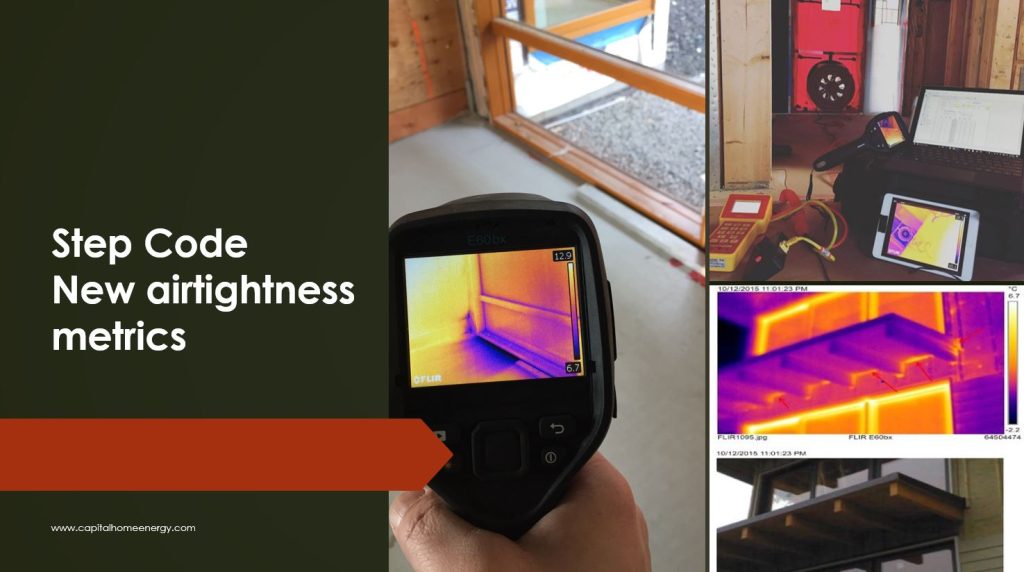Summary: Step Code updates and how they help small homes
Step Code New airtightness metrics
Up until now, the BC Energy Step Code has only allowed ACH (air changes per hour) as the metric for measuring airtightness in buildings. This has been a struggle for smaller homes, since ACH is a volume based metric.
Now as of May 1st, 2023 there are two new metrics we can use when testing homes/buildings for airtightness:
- ACH – air changes per hour – volume-based metric
- NLA – normalized leakage area – total envelope area metric (NEW)
Size of hole in either in cm² or inches² per m² or ft ² - NLR – normalized leakage rate – total envelope area metric (NEW)
The quantity of air that leaks into or out of the building per hour, divided by the total envelope surface area (in m² or ft²) at a differential pressure of 50 Pa
What does this mean?
- New updated air tightness metrics No longer just ACH
(air changes per hour) - ACH Favors larger homes
volume-based metric - Much easier for a smaller home to achieve NLA, NLR

Step Code – Small Homes <<300m³
- Laneway
- Coach house
- Small infill
- Auxiliary building
- Modular
Energy modeling updates for small homes:
Small homes struggle with the Mechanical (MEUI) targets
MEUI describes the mechanical energy use over a year, normalized per square metre of conditioned space
Percent heat loss than reference house – required energy to heat the home
- Step 3 – Percent heat loss from 10% to 5 %
- Step 4 – Percent heat loss from 20% to 15 %
- Step 5 – Percent heat loss from 40% to 25 %
Percent better than reference house – Improvement
- Step 3 – Percent improvement from 20% better than reference house to 10% better
- Step 4 – Percent improvement from 40% better than reference house to 30% better
- Step 5 – Percent improvement from 70% better than reference house to 60% better
Relaxed metrics make it less challenging for Small homes to achieve Step 3 through 5
Contact us for more information and how we can help you on your next project.
Here are some more highlights of the most recent Step Code updates from the May 1st, 2023:
- These Code changes took effect May 1, 2023. By that date, most new construction in BC must be 20% more energy efficient than base 2018 BC Building Code.
- The opt-in Zero Carbon Step Code will also be available for local governments to reference starting May 1, 2023.
- Read the amendment to the Building Act General Regulation online.
- Read a PDF convenience copy of the BC Building Code changes (for information only).

